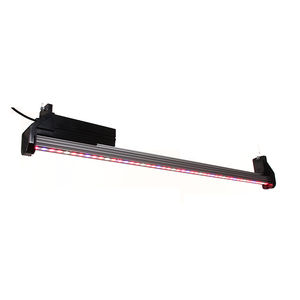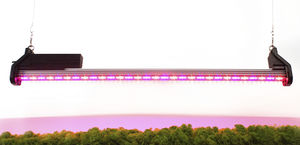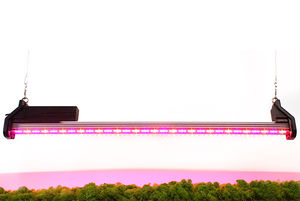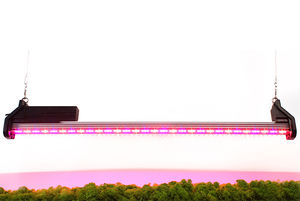

- Products
- Catalogs
- News & Trends
- Exhibitions
Greenhouse light LEDbluered
Add to favorites
Compare this product
fo_shop_gate_exact_title
Characteristics
- Application
- for greenhouse
- Technology
- LED
- Other characteristic
- blue, red
- Power
100 W
Description
Main (top) supplementary lighting lamp AgroLED-II-100W (TOP) with optical lense
AgroLED-ІІ-100W (TOP) LED lamp is designed to create the main (top) artificial lighting in industrial and domestic greenhouses. Due to the unique high photon flux density of 2700 μmol/м2·s, this lamp is used while growing vegetables, berries, flowers, salads in one level, greens and seedlings.
Use of the lens made it possible to reduce the angle of light scattering from 120о to 90о and, as a result, to increase the value of the light flux that falls directly on the plants.
The “AgroLED-ІІ-100W (TOP)”, lamp has a unique high photon flux density of 2700 μmol/м2·s at a distance of 10 cm from the top of the plant and uniform light distribution along the entire length of a row of plants above which the lamps are located in one line.
“AgroLED-ІІ-100W (TOP)” lamps can be used as the main top supplemental lighting.
Depending on the interval between the lamps in a row, different values of radiant flux can be achieved. (HPS illuminance equivalent is 12-24 thousand Lux)
In low-height glass or film greenhouses (up to 3.7 meters), the flow of light is sufficient to illuminate the internal space between rows of plants. The upper row of lamps will also perform the functions of inter-row lighting lamps. At the same time, the yield and quality of products will increase significantly.
The payback period of the main (top) LED supplementary lighting system is 1.5 of an agricultural season;
*Prices are pre-tax. They exclude delivery charges and customs duties and do not include additional charges for installation or activation options. Prices are indicative only and may vary by country, with changes to the cost of raw materials and exchange rates.






